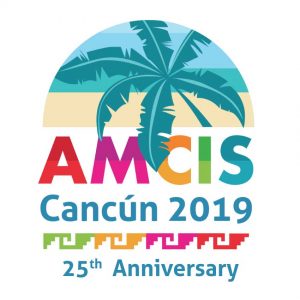Abstract
A business process is a collection of related, structured activities or tasks by people or equipment, which in a specific sequence produce a service or product for a set of customers. In other words, a business process serves a particular business goal. Business processes occur at all organizational levels and may or may not be visible to the customers. They provide several benefits including improved customer satisfaction and improved agility for reacting to rapid market change. We conducted a study of the business process and a user experience evaluation regarding the management of administrative procedures in the Secretariat of Education of Veracruz, Mexico (SEV). We focused on business processes teachers and office employees must carry out. These processes include licenses, employment registration, termination, exchanges, institutional credentials, incentives, insurances among others. In Mexico often these business processes lack simplicity, transparency, and technological support. This implies in downtime, high expenses, and even illegal behavior (e.g., payment of bribes) among other problems. Despite the fact that we focus on teachers, students are also affected when teachers need to neglect their school activities to engage in these processes. In addition, current business processes at SEV have unclear procedures, multiple undocumented requirements, etc. Furthermore, a teacher might need to make many trips to the management office, to appear in person, and present physical documents. All this could be simplified through a digital system. SEV wanted to implement these processes in more efficient ways to facilitate their and teachers’ work. Therefore, we are developing an information system to improve the current work practice while supporting the management of government services. Our approach is based on collaboration and end-user development. For this inquiry, we conducted kickoff meetings, user and stakeholder interviews, task analysis, product roadmaps, focus groups, prototyping, and usability and concept testing. Despite our approach, we have faced many challenges including limited communication and collaboration between the different involved institutions, changes in governments and staff, high levels of mistrust, teachers’ fear of losing their job due to corruption practices, identifying the right stakeholders to provide us accurate information, availability of the teachers and staff for interviews, getting the accurate documentation, and lack of knowledge about the business processes. We have solved those challenges using multiple approaches including project management strategies, regular communication with stakeholders, inviting them to be part of the research team, observation, finding key participants in the project, following up on stakeholders’ suggestions, sharing research advances and achievements, visiting their workplaces, signing agreements and work commitments, and ensuring confidentiality of all collected information. In this talk, we will present the challenges we faced in developing an information system for SEV and how the different approaches we adopted helped us to address these challenges.
Recommended Citation
Magallanes, Yazmín; Hernández, Arlette; and Ruiz, Yazmín, "Challenges in the Development of a Virtual Office for Services to Teachers and Administrative Employees in Mexico" (2019). AMCIS 2019 Proceedings. 62.
https://aisel.aisnet.org/amcis2019/treo/treos/62
Challenges in the Development of a Virtual Office for Services to Teachers and Administrative Employees in Mexico
A business process is a collection of related, structured activities or tasks by people or equipment, which in a specific sequence produce a service or product for a set of customers. In other words, a business process serves a particular business goal. Business processes occur at all organizational levels and may or may not be visible to the customers. They provide several benefits including improved customer satisfaction and improved agility for reacting to rapid market change. We conducted a study of the business process and a user experience evaluation regarding the management of administrative procedures in the Secretariat of Education of Veracruz, Mexico (SEV). We focused on business processes teachers and office employees must carry out. These processes include licenses, employment registration, termination, exchanges, institutional credentials, incentives, insurances among others. In Mexico often these business processes lack simplicity, transparency, and technological support. This implies in downtime, high expenses, and even illegal behavior (e.g., payment of bribes) among other problems. Despite the fact that we focus on teachers, students are also affected when teachers need to neglect their school activities to engage in these processes. In addition, current business processes at SEV have unclear procedures, multiple undocumented requirements, etc. Furthermore, a teacher might need to make many trips to the management office, to appear in person, and present physical documents. All this could be simplified through a digital system. SEV wanted to implement these processes in more efficient ways to facilitate their and teachers’ work. Therefore, we are developing an information system to improve the current work practice while supporting the management of government services. Our approach is based on collaboration and end-user development. For this inquiry, we conducted kickoff meetings, user and stakeholder interviews, task analysis, product roadmaps, focus groups, prototyping, and usability and concept testing. Despite our approach, we have faced many challenges including limited communication and collaboration between the different involved institutions, changes in governments and staff, high levels of mistrust, teachers’ fear of losing their job due to corruption practices, identifying the right stakeholders to provide us accurate information, availability of the teachers and staff for interviews, getting the accurate documentation, and lack of knowledge about the business processes. We have solved those challenges using multiple approaches including project management strategies, regular communication with stakeholders, inviting them to be part of the research team, observation, finding key participants in the project, following up on stakeholders’ suggestions, sharing research advances and achievements, visiting their workplaces, signing agreements and work commitments, and ensuring confidentiality of all collected information. In this talk, we will present the challenges we faced in developing an information system for SEV and how the different approaches we adopted helped us to address these challenges.


